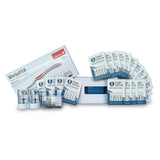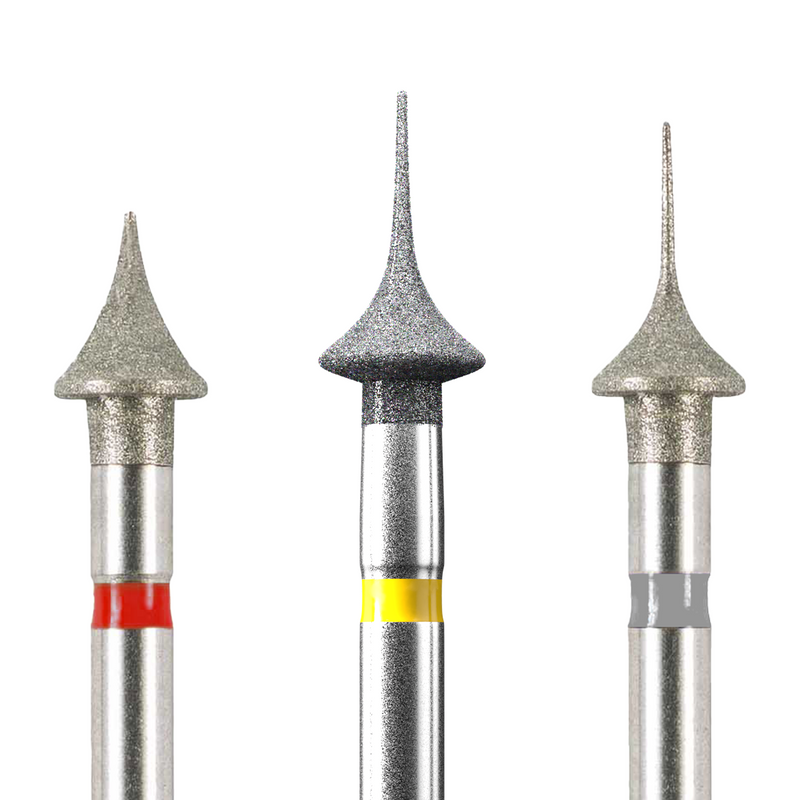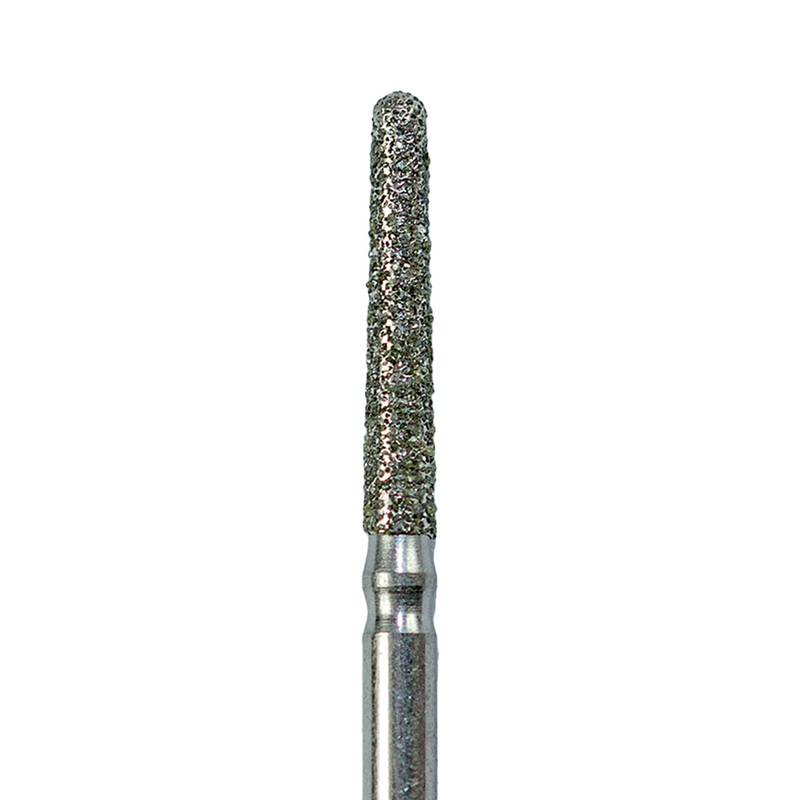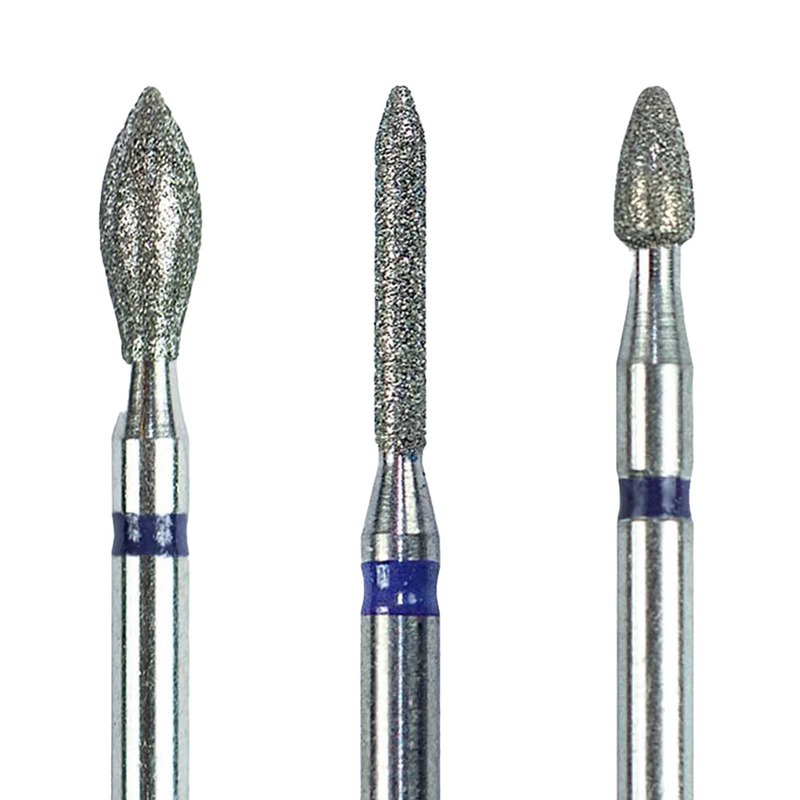0 comments
Diamond Burs in Dentistry
Diamond Burs in Dentistry: The Full Guide
Introduction
Diamond burs are the secret weapons of many dental procedures. These tiny, durable tools have transformed the way dentists approach everything from routine fillings to more complex restorative work. If you're curious about what makes them so special, keep reading—this guide will walk you through everything you need to know about diamond burs in dentistry.
What Are Diamond Burs?
So, what exactly are diamond burs? Simply put, they’re dental tools coated with tiny diamond particles. These diamond chips give them their unique cutting power, allowing for precision in shaping tooth structures. Dentists use diamond burs because they cut more effectively and last longer than other materials. Plus, they're available in a variety of shapes and grits, making them versatile for all sorts of procedures.
Types of Diamond Burs
Diamond burs come in a wide variety of shapes, sizes, and grits, each designed to handle specific tasks in dentistry. The right shape and size can make a big difference in the outcome of your procedure, so let’s dive deeper into the different types:
- Round Diamond Burs are one of the popular type of diamond burs in the industry. They’re perfect for opening cavities because of their spherical shape, which allows for controlled removal of tooth structure. Whether you're creating access for a filling or refining the walls of a cavity, round burs give you the precision you need to work efficiently and with care.
- Diamond Tapered Burs are frequently used in crown preparation. Their narrow, pointed end allows for detailed shaping of the tooth while maintaining a smooth transition between different tooth surfaces. This makes them especially useful for procedures requiring both cutting and contouring, such as when prepping for crowns or bridges. The tapered design helps maintain control, reducing the risk of removing too much enamel.
- Diamond Flame Burs is one of the most versatile tools in a dentist’s arsenal. Known for its slender, elongated shape with a pointed tip, it’s ideal for finishing and contouring dental surfaces. These burs allow for detailed work in narrow or hard-to-reach areas, such as refining margins on crowns or finishing composite restorations. Their precision makes them perfect for delicate tasks where you need to remove material without damaging adjacent areas.
- Cylinder Diamond Burs are commonly used for straight cutting and surface reduction. They’re fantastic for tasks like reducing tooth structure when prepping for a crown or bridge. The flat-ended cylinder bur allows for uniform removal, creating smooth, even surfaces that make fitting prosthetics more accurate.
- Football Diamond Burs are shaped like an American football, these burs are often used for occlusal adjustment and contouring. Their curved surface makes them excellent for working on larger areas like occlusal surfaces or polishing the edges of fillings. Football burs are particularly useful when you need to maintain the natural anatomy of the tooth while making adjustments.
- Needle Diamond Burs have a sharp, pointed design. These are ideal for precision work in tight spaces. Dentists often use them for finishing the edges of crowns, shaping tooth surfaces, or creating small incisions in more intricate procedures. Needle burs offer excellent control, especially when working close to delicate tissues.
- Diamond Pear-Shaped Burs are great for creating undercuts and retentive areas in cavity preparations. Their slightly bulbous shape allows you to cut into the enamel and dentin with minimal effort, making it easier to shape cavities that will securely hold fillings or other restorations.
- Inverted Diamond Bur is ideal for flattening floors and creating sharp angles within cavity preparations. This type of bur is used to create retention points, which are necessary for certain types of restorations to stay in place.
Key Benefits of Diamond Burs
Why should dentists choose diamond burs over other types? Here are the key benefits:
- Precision: Thanks to the hardness of diamond, these burs offer a clean, accurate cut, reducing the risk of unnecessary damage to the surrounding tooth structure.
- Durability: Diamond burs can withstand a lot of wear and tear, lasting longer than most other types of burs.
- Efficiency: They cut quickly, which helps speed up procedures and keeps patients more comfortable.
Choosing the Right Diamond Bur
When selecting the right diamond bur for your procedure, there are several factors to keep in mind to ensure precision, efficiency, and the best outcomes for your patients:
Clinical Applications
Diamond burs are essential tools in various dental procedures, valued for their precision and versatility. Here’s a quick overview of their most common uses:
-
Cavity Preparation
Diamond burs excel in shaping cavities with precision, cutting through tough enamel efficiently. They offer smooth cutting, minimizing damage to surrounding tooth structure for a cleaner prep. -
Crown and Bridge Preparation
For crown and bridge work, diamond burs allow quick and accurate removal of tooth structure. Their sharp edges ensure a clean prep, aiding in a perfect fit and reducing complications. -
Veneer Preparation
In veneer prep, diamond burs provide precise enamel removal, crucial for smooth surfaces that bond well with veneers. Their fine grit options ensure control and accuracy. -
Interproximal Reduction (IPR)
In orthodontics, IPR diamond burs are used for IPR to create space between teeth by removing small amounts of enamel. Flame-shaped burs are ideal for precise reduction in tight spaces. -
Composite Finishing and Polishing
After composite restorations, diamond burs smooth and polish the surface, removing excess material and achieving a natural finish with their fine and extra-fine grits. -
Endodontic Access Preparation
Diamond burs are used to create precise openings in enamel and dentin to access the pulp chamber, minimizing risk of cracks or damage. -
Preparation for Inlays and Onlays
When prepping for inlays and onlays, diamond burs help remove old restorations or decay, creating a perfect cavity shape for a snug fit.
Think About Grit
Grit size plays a significant role in how aggressively a bur cuts and the type of finish it leaves:
- Super-Coarse: Ideal for rapid cutting and removing hard structures like old restorations or thick enamel.
- Coarse: Great for bulk removal of tooth structure but leaves a rough finish.
- Medium: A balance of efficiency and smoothness, commonly used for crown prep and shaping.
- Fine: Provides a smooth, controlled finish, suitable for delicate tasks like veneer preparation.
- Extra-Fine: Used for polishing and smoothing, perfect for the final touch on restorations or enamel surfaces.
Choosing the right grit ensures you can work efficiently while achieving the desired level of precision and smoothness.
Match the Bur to Your Handpiece
Not all burs fit every handpiece, so choosing the correct shank type is crucial for optimal performance. Here’s a quick guide to the main shank options:
- Standard FG: Fits most high-speed handpieces. Ideal for general procedures like cavity preparation and crown work.
- Short FG: Shorter than standard FG burs, perfect for smaller mouths or tight spaces, such as pediatric dentistry.
- Surgical FG: Longer than standard FG burs, providing extended reach for surgical tasks like bone cutting or wisdom tooth extraction.
2. Latch-Type (RA) Shanks: Rotary Adapter burs are used in slow-speed handpieces. Ideal for polishing, finishing, and contouring procedures. RA burs are often employed in tasks requiring less aggressive cutting.
3. Straight Handpiece (HP) Shanks: Designed for straight handpieces, these HP burs are typically used in lab work or surgical procedures. They offer a stable and controlled cutting experience for various tasks.
Choosing the right shank ensures your bur fits securely and performs efficiently, enhancing the success of your dental procedures.
Dental Diamond Burs Manufacturers
When selecting dental diamond burs, several reputable manufacturers offer high-quality options. Eagle Dental Burs is a top choice for its precision and reliability, alongside other well-regarded brands like SS White, Komet, MDT, and Brasseler. Each brand provides a range of burs designed to meet the needs of every dental professional.
Conclusion
Diamond burs have become an essential tool in modern dentistry, offering precision, durability, and versatility. Whether you’re prepping a cavity or polishing a veneer, there’s a diamond bur for the job. Choosing the right one can make all the difference in both efficiency and patient outcomes. So, if you’re looking to upgrade your dental tools, consider adding a few high-quality diamond burs to your collection—you and your patients will feel the difference.
 Duties are now included in the product price
Duties are now included in the product price













0 comments